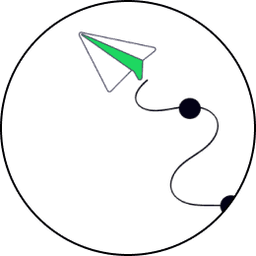Original Link: Building the AI × UX Scenius — with Linus Lee of Notion AI
Summary
On the Road with Latent Space: A Visit to Notion New York
In a special episode of the Latent Space podcast, Alessio from Decibel Partners and Swyx from Latent Space, forgo their usual setting to interview Linus at the aesthetically consistent Notion New York headquarters. Linus reflects on Notion's distinctive design ethos which emanates from the company's founders, with a unique taste and focus.
Discussing Linus's diverse background, the trio delve into his journey from studying computer science at Berkeley to his prolific stint with multiple tech-based entities such as Replit, CatalystX, Hack Club, IdeaFlow, and finally, Notion. They touch upon Linus's Indiana roots, highlighting his fondness for small towns, despite now thriving in the urban buzz of New York.
A significant portion of the conversation centers on the AIUX SF meetup, a gathering that originated from a Twitter conversation and saw a confluence of machine learning and human-computer interaction enthusiasts. The meetup was an effort to bridge the gap between AI technology and intuitive user interfaces. Here, they reminisce about various innovations presented, especially those that moved beyond traditional auto-complete functions. These included Amelia's tool allowing users to alter text tone using brushes and Linus's prototype featuring semantic attribute sliders for text modification.
Towards the end, Alessio and Swyx touch upon Linus's penchant for side projects. Linus shares his philosophy for successful side hustling, emphasizing the importance of manageable scopes, using familiar tools, and consistently learning and iterating.
Throughout, the theme of innovation, the love for creating, and the joy of exploring new technological intersections are evident.







![Latent Space Podcast 8/16/23 [Summary] - The Mathematics of Training LLMs — with Quentin Anthony of Eleuther AI](/_next/image?url=https%3A%2F%2Fwww.datocms-assets.com%2F101962%2F1692324088-screenshot-2023-08-17-at-9-59-17-pm.png&w=3840&q=75)

![Latent Space Podcast 8/10/23 [Summary]: LLMs Everywhere: Running 70B models in browsers and iPhones using MLC — with Tianqi Chen of CMU / OctoML](/_next/image?url=https%3A%2F%2Fwww.datocms-assets.com%2F101962%2F1691894611-screenshot-2023-08-12-at-10-42-43-pm.png&w=3840&q=75)
![Latent Space Podcast 8/4/23 [Summary] Latent Space x AI Breakdown crossover pod!](/_next/image?url=https%3A%2F%2Fwww.datocms-assets.com%2F101962%2F1691539617-screenshot-2023-08-08-at-8-02-52-pm.png&w=3840&q=75)
![Latent Space Podcast 7/26/23 [Summary] FlashAttention 2: making Transformers 800% faster - Tri Dao of Together AI](/_next/image?url=https%3A%2F%2Fwww.datocms-assets.com%2F101962%2F1691543194-screenshot-2023-08-08-at-8-43-59-pm.png&w=3840&q=75)
